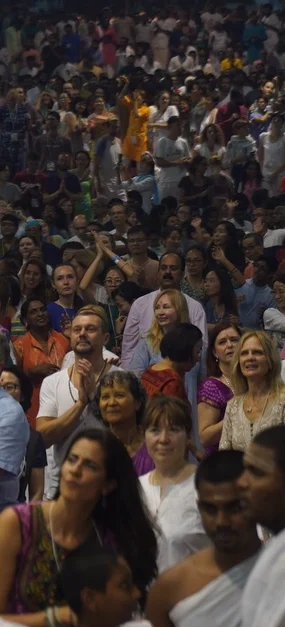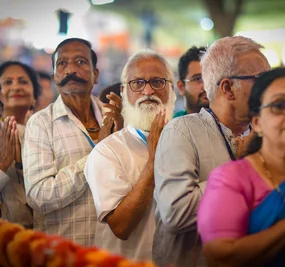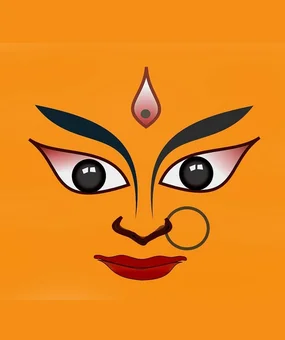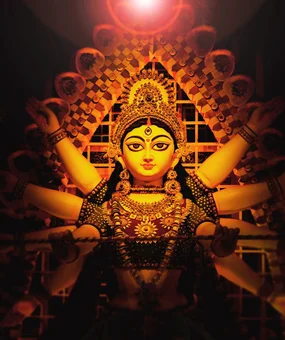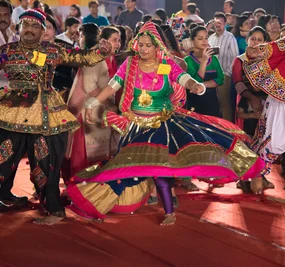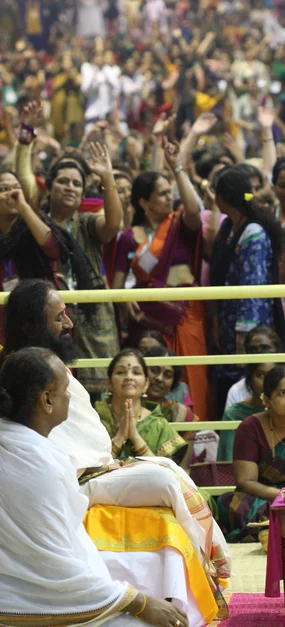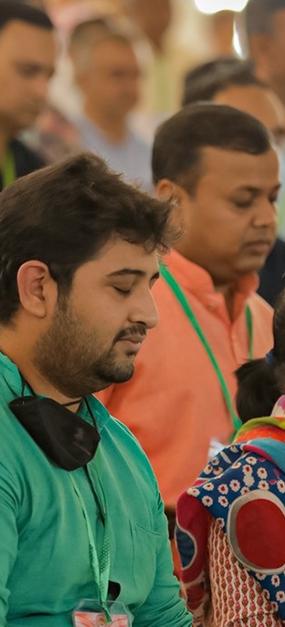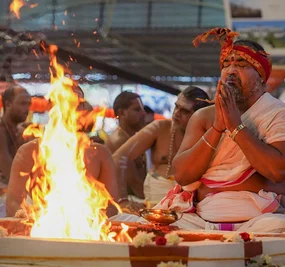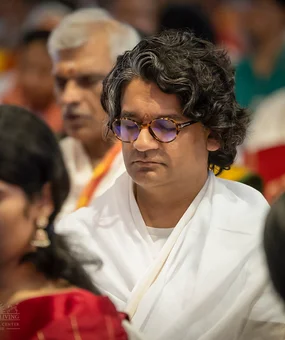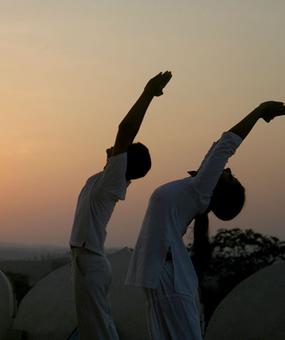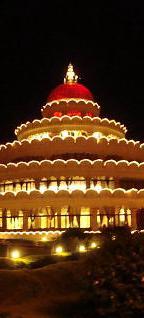Navratri – the festival of worshipping the Divine Mother – is celebrated in different ways in different parts of India.
In Delhi, numerous events around Ramlila mark the celebrations, while in West Bengal, Durga Puja captures the essence of the festival. In Gujarat, it is celebrated by performing the Garba dance while in South India, celebrations take the form of Bommai Golu or Navratri Golu – the artistic display of dolls.
Celebrated in Tamil Nadu, Karnataka, and Andhra Pradesh, the festival includes placing dolls of a multitude of gods, goddesses, men, animals, and children on a steps-like set-up. In Tamil, Bommai Golu or Kolu means Divine Presence, in Telugu, Bommala Koluvu means Court of Toys, and in Kannada, Bombe Habba means Doll Festival.
A few aspects to understand the essence of this colorful and decorative ritual:
#1 What is the significance of the Navratri Golu?
The Navratri Golu depicts scenes from ancient times – celebrated Indian stories that have been passed on from generation to generation like the Ramayana, Puranas, and the Dashavataram. This is the time of the year that you revisit those precious lessons from timeless, age-old stories. The steps may also be interpreted as the evolution ladder that we are all traversing in the journey of life.
#2 How is the display done?
The dolls are placed on multiple steps in the house – in odd numbers. The numbers could vary from one to 11 depending on the number of dolls available for display. Many families place nine steps, each step representing the nine days of Navratri. Some keep three, five or seven steps as well. The steps are covered with a decorative cloth, and the dolls are placed on it.
#3 How do you decorate the steps of the Navratri Golu?
The first step is decorated with a kalash (ceremonial jar). The water-filled jar is decorated with a coronet of mango leaves, and a coconut is placed on top of it. It is considered to represent Goddess Durga. Idols of deities are placed on both sides of the kalash. According to tradition, the dolls of Goddesses Durga, Lakshmi, Saraswati and the wooden dolls called the Marapachi Bommai are always a part of the arrangement.
The next few steps have idols of saints and heroes of the country. One of the steps represents human activities – depicting functions such as marriage, temples, and an orchestra or music band. Business is usually represented by the Chettiar set of dolls, with shop items and the Marapachi couple dressed in colorful clothes.
It is a custom to add at least one new doll every year.
The Golu could be a mode of telling ancient stories such as Ramayana or Bhagavad Gita or it could simply depict the evolution of life from animals to the sages and seers.
#4 How many days is the Golu worshipped?
The Navratri Golu can be kept between three and nine days, and the assembly of dolls is worshipped twice each day.
On the auspicious day of Amavasai (no moon), the Navaratri preparations start by setting up the steps, decorating the homes and temples, and lighting the streets. The nine days of Navaratri start the day after this.
On the ninth day, Saraswati Devi, the Goddess of learning and knowledge, is worshipped. People place books and musical instruments next to the Golu arrangement. Ayudai pooja (worship and thanksgiving to tools and implements and vehicles) is performed. Gratitude is expressed for all kinds of vehicles (such as buses, cars, and trucks) and tools (such as water pumps, chisels, hammers, and the plow).
On the tenth and last day, Vijayadasami, the day of victory, is celebrated. This is considered the most auspicious day of all – to start new ventures and journeys, and a day to start learning new skills. On this day, the Golu dolls are symbolically put to sleep, and then, packed the day after. Till they are brought out of their boxes the following year.
#5 What traditions surround the Navratri Golu?
Most people light lamps, draw colorful kolams (rangoli or floor decoration), perform aarti, recite shlokas (holy chants), and offer special dishes, especially a protein-rich dish called sundal (made of legumes), with some sweets and fruits every day.
During the Golu set-up, women invite other women and honor them by gifting betel leaves, coconuts, fruits, flowers, bangles, turmeric, kumkum (vermilion powder) and prasadam (devotional offering of food made for the Divine and then distributed among people).
It is an ideal time for families to display their creativity. The festival is a delightful reminder of the rich and colorful historical and cultural heritage of India! A glorious occasion to eat and meet in harmonious communion!
At the Art of Living Ashram, this tradition is preserved and celebrated at the Veda Agama Samskrutha Maha Pathshala.
(Inputs by Sivagama Visharada, Sivasri.A.S. Sundaramurthy Sivam, Principal, Veda Agama, Samskrutha Maha Patashala, Ved Vignan Maha Vidya Peeth, Sri Sri Gurukul, Bengaluru.)



